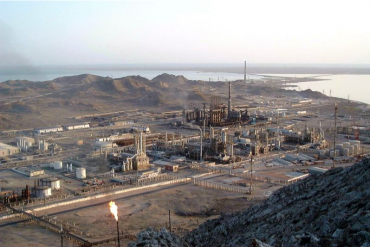MOSCOW – Turkmenistan, Uzbekistan and Azerbaijan – a region with sluggish base oil production and exports – could find fresh export demand in Iran after the lifting of economic sanctions, according to an industry insider.
Denis Varaksin, base oil and slack wax sales manager for Berlin-based DYM, said Turkmenistan stands out among those three as having good potential to upgrade its base oil production capacities and increase its exports.
Turkmenistan
The base oil plant at Turkmenbashi Oil Processings refinery in Turkmenbashi has capacity to produce approximately 80,000 tons per year, but it managed to sell more than 110,000 tons in 2016.
This was caused by an administrative backlog of shipments slotted for sale, which were not realized in due time, Varaskin told the GBCs Base Oils and Lubricants conference held here in May. This product is good, with high viscosity index, light color and low sulfur content. Its prices rose 50 percent for SN180 and 30 percent for SN350 during 2016.
Last year the refinery exported 52,500 tons of solvent neutral 180 oil, 57,000 tons of SN35 and 3,000 tons of SN600.
In 2015, the refiner approved a Group II/III modernization program and announced a tender for design and construction of a 100,000 t/y upgrade. However, the challenging economic situation postponed all modernization plans, and a construction timetable hasnt been scheduled yet, in spite of the fact that high quality base oils are in demand in the region, Varaksin said.
Last year the refinery restarted its slack wax production. In 2016, it exported 3,000 tons of slack wax, and just in February of this year it shipped 2,000 tons of the same product, he said.
Photo: Gama Holding

Uzbekistan and Azerbaijan
Feedstock shortages and great distance from the nearest ports have crippled production at Uzbekneftegazs base oil plant in Fergana, Uzbekistan, DYM found.
The refinery produces limited volumes of industrial grade mineral oils based on the [Russian] GOST standard, such as I-20, I-50 and M-20 products, and exports them primarily to Kazakhstan and other neighboring countries. These oils have a high viscosity index but a dark color and high sulfur content, Varaksin said.
He added that the port nearest to Fergana is 3,500 kilometers away, which limits the refinerys export options because of the expensive transit rail tariff.
Azerbaijan features the only naphthenic refinery in the wider region of the ex-Soviet Union. In its heydays during the Soviet Union era, it was the one of the largest naphthenic refineries in the world, but today its capacity has dwindled to 100,000 t/y, according to DYM.
However, the refinery is capable of producing limited volumes of low quality, cheap naphthenic products, and due to the lack of investors and incentives for a quality upgrade, it is scheduled for closure by 2020, Varaksin said.
In the past few years, the refinery actively exported base oil to Turkey via Georgian ports such as Batumi. These oils have been used in Turkey in an illegal scheme when local distributors and alleged lubricants makers diluted diesel fuels with base oils for large profits.
This scheme was outlawed by the Turkish authorities in 2015.
Besides shipping routes through the Black and Caspian seas, southern export routes by rail and river are becoming popular, with Iran the most attractive destination for base oils produced in Central Asia and in Russia, Varaksin said.
Iran is a regional powerhouse; it has a population of 82 million, of which 66 percent are below 35 years of age. It is the largest economy and lubricant consumer in the Middle East, with the strongest GDP, and it increasingly imports high quality base oils such as Group III, II and even Group I+, Varaksin concluded.